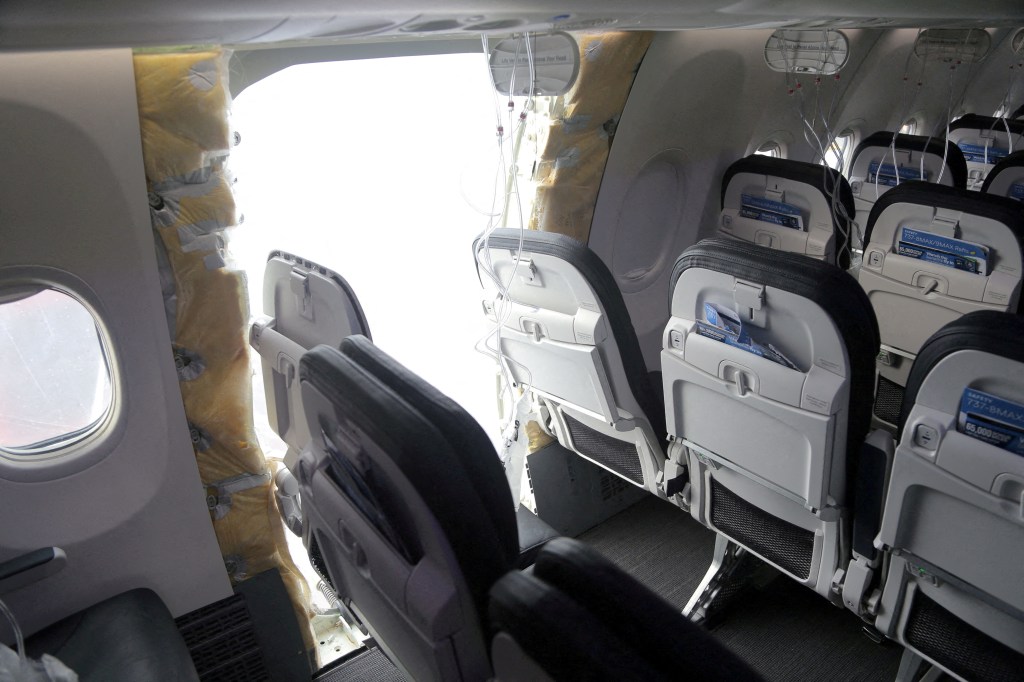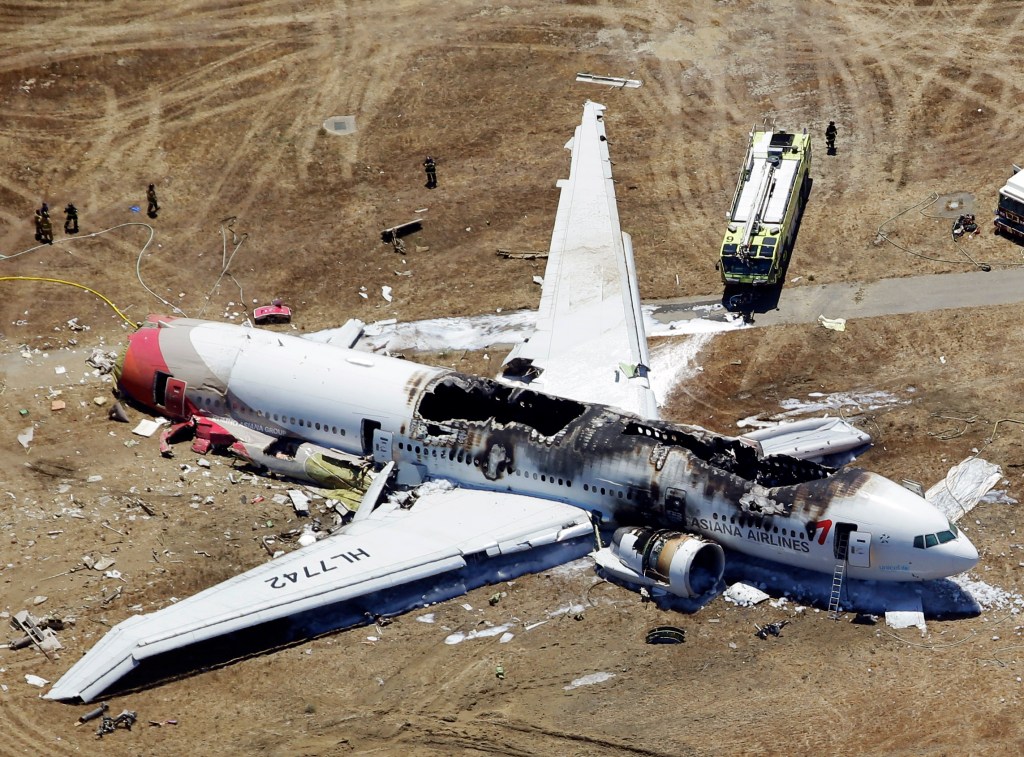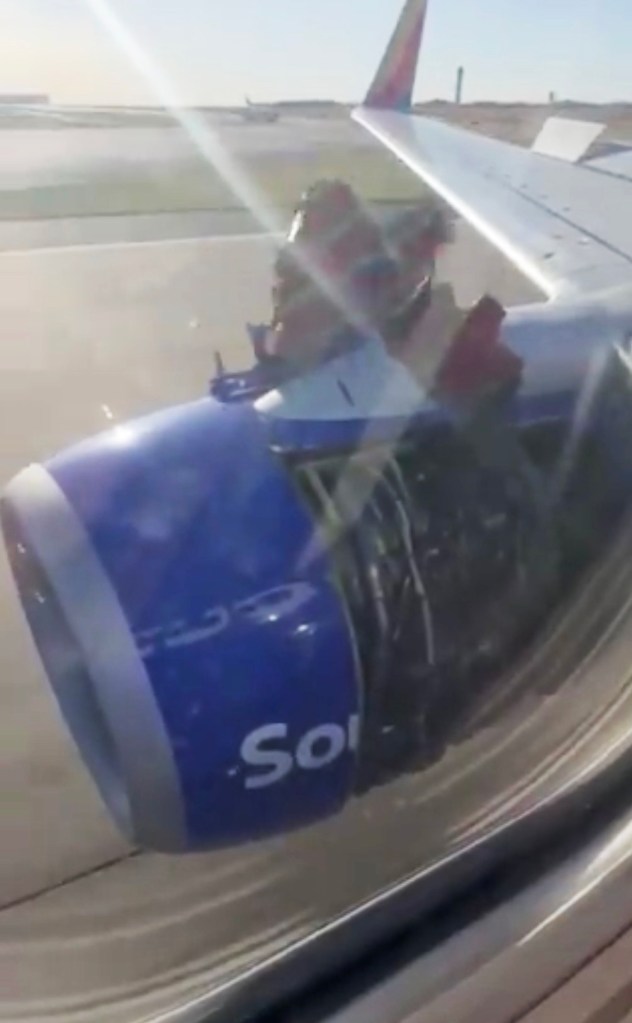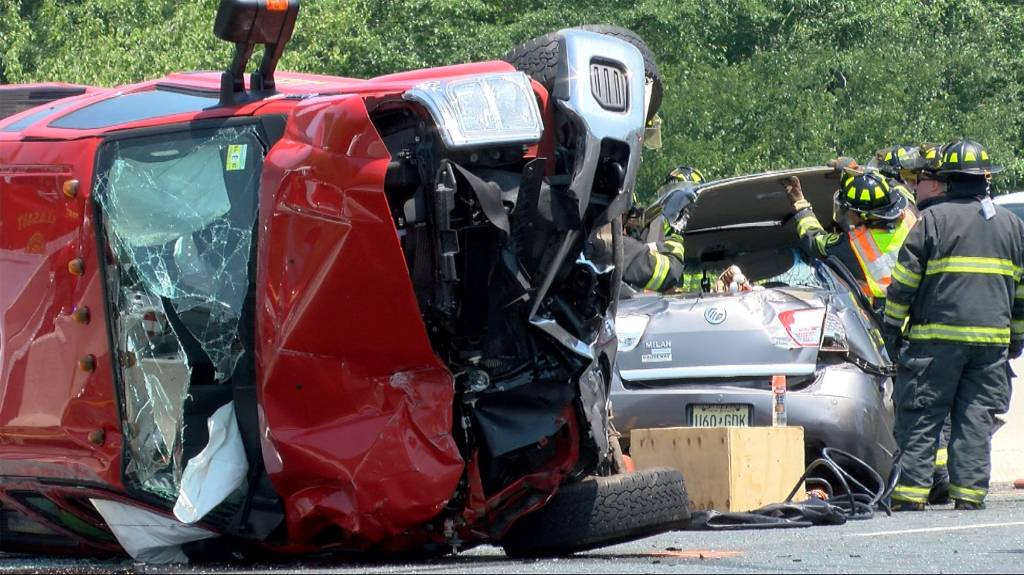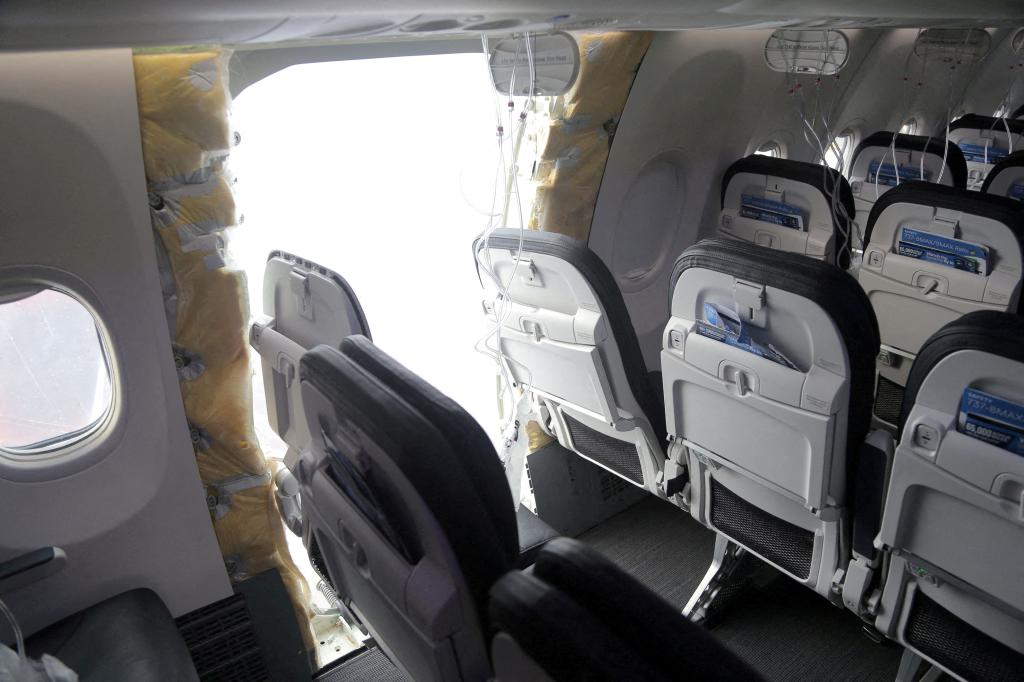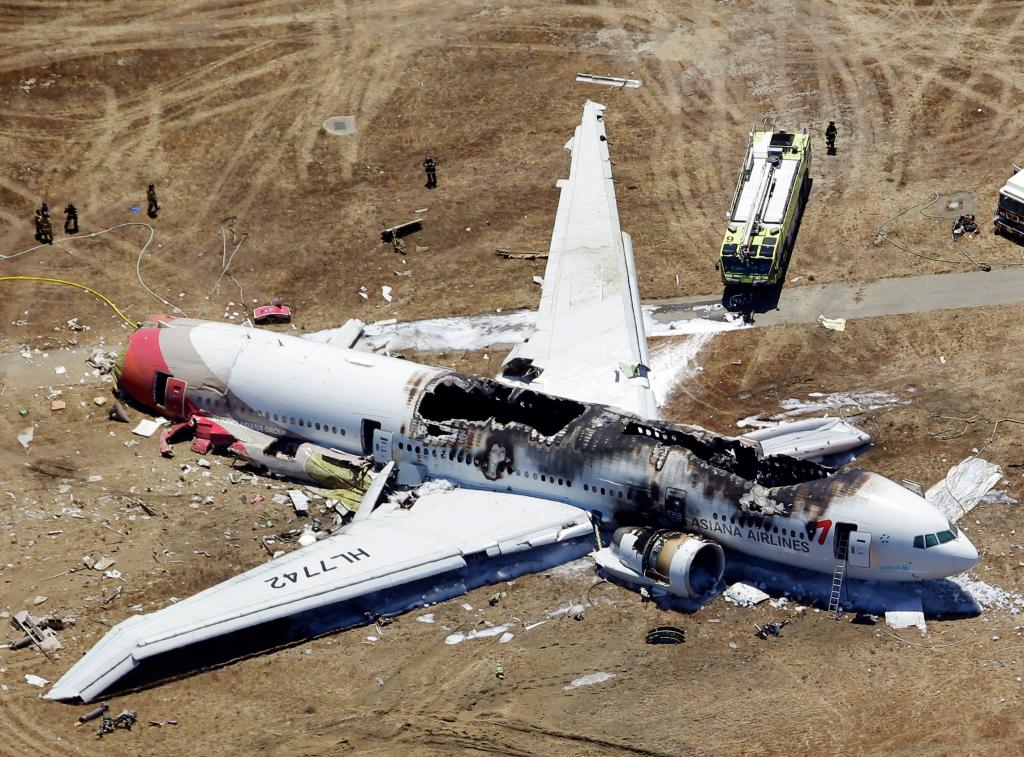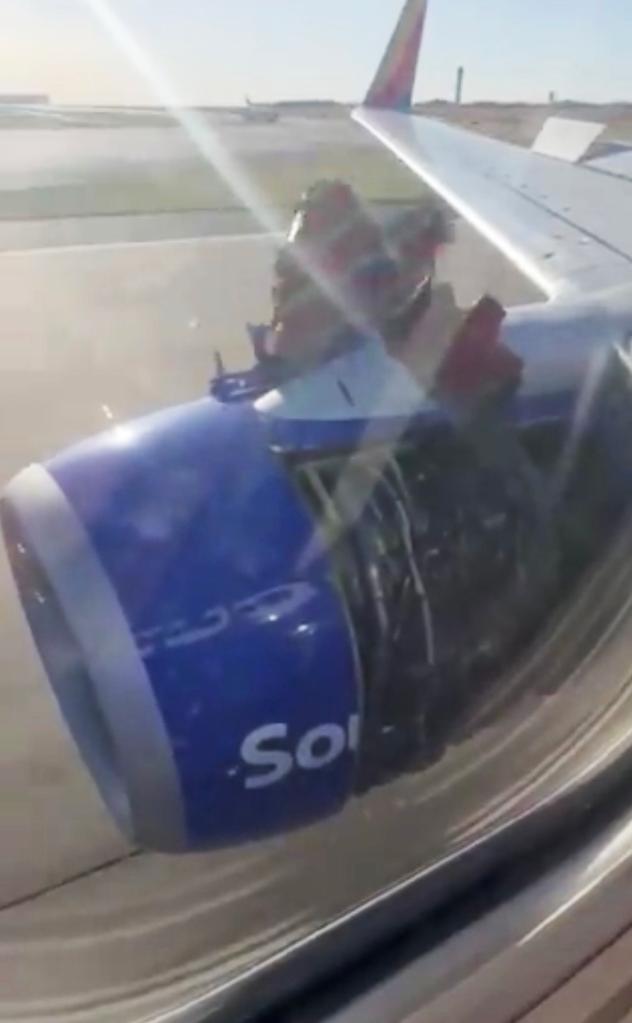Is it still safe to fly? Experts have mixed opinions after mid-air disasters
Is the terror in the skies a bit overblown?
The seemingly myriad of mid-air mishaps recently have made flying seem like playing Russian Roulette at 30,000 feet. Infamous recent examples have included the Alaska Airlines door disaster in March and Southwest Airlines’ near crash-landing just last week.
However, experts have mixed opinions regarding whether it’s still safe to fly the friendly skies.
Some suggested that passengers — who have been canceling flights in massive numbers of late — are just being plane hysterical.
“It’s the safest form of transportation ever designed by humankind,” John Cox, a former airline pilot who runs a safety consulting firm, told the New York Times.
Many have declared that getting in a car is far more dangerous than boarding a commercial jetliner.
“When you arrive at the airport and step aboard the pressurized tube, that’s the safest part of the trip,” Anthony Brickhouse, a crash investigator and professor of aviation safety at Embry-Riddle Aeronautical University, told CNN. “You were more at risk driving to the airport.”
Indeed, in the last decade, only five people have died on commercial scheduled flights in the US, CNN reported.
Meanwhile, over a hundred people died a day on American roadways between 2003 and 2022.
Experts have also pointed out that the lion’s share of mechanical mishaps are common and often minor.
“Little small components will always start to burn out or break,” said Amy Pritchett, a pilot and professor of aerospace engineering at Pennsylvania State University. “There will always be potholes in the pavement in the taxiway that jostles something.”
Often times these are quickly fixed via a backup part, which sometimes requires the plane to divert. While dramatic, this redirecting is generally conducted out of an abundance of caution — rather than imminent disaster as laypeople often believe.
Earlier this month, an international flight flew all the way across the Atlantic, before turning around and flying back due to a mechanical issue.
The jet reportedly had a problem with the engine that didn’t impact that particular flight but could have posed a risk to future trips.
Despite the relative safety, experts say we shouldn’t get complacent about flying the so-called friendly skies.
With many of the aforementioned incidents, it was a miracle that no one got killed, experts claim.
In the most infamous incident this past winter, a faulty bolt caused the door of a Boeing plane operated by Alaska Airlines to blow off at 16,000 feet, injuring one person.
Had this component come off at the 35,000-foot cruising altitude, it could’ve destroyed the plane and killed all 177 passengers aboard, CNN reported.
“There’s a sense of overconfidence,” said Ed Pierson, a director of the Foundation for Aviation Safety and a vocal critic of Boeing. “The gold standard is melting down, because we continue to try to downplay everything and talk about how safe the system is.”
He continued, “That’s not the right mindset. That’s the mindset that gets people killed.”
Meanwhile, for years, the National Transportation Safety Board has been calling on aviation companies to install systems in cockpits that warn of possible runway collisions — but they haven’t made moves to do so despite the technology already existing.
“It’s going to be technology that prevents any of this from reoccurring,” said NTSB Chair Jennifer Homendy.








